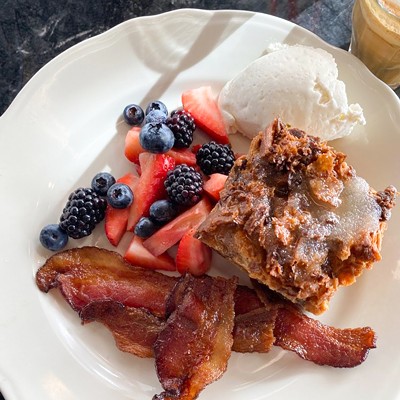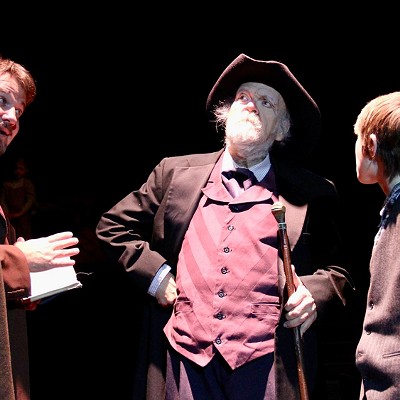When it finally opens, the American Indian Cultural Center and Museum, located at Interstate 40 and Eastern Avenue, is expected to become an international tourism destination.
Securing additional funds, however, continues to be the last major hurdle to completing construction that began six years ago. NACEA Executive Director Blake Wade said he’s counting on $40 million from the Legislature to finish the “world-class” facility, which has already received $91 million in government and private funding.
Wade acknowledged he has secured an additional $40 million from private donors who are “willing to stay with us for one more legislative session. I think we’re going into the next session with guns blazing.”
Oklahoma’s Indian tribes have been generous with their money; 23 of the 39 tribes are listed among the private donors.
Although the state Senate in May rejected a measure that would have provided the $40 million requested by NACEA, Wade said he’s hopeful the request will be approved in the next legislative session.
Gov. Mary Fallin supports the project and will lobby on its behalf, said Alex Weintz, the governor’s communications director.
“The governor supports the completion of the cultural center because of the significant contributions taxpayers already have made to it,” said Weintz. “She supports using state funds to assist private funds.”
Fallin isn’t the only public official showing her support. House Speaker-elect T.W. Shannon, Oklahoma City Mayor Mick Cornett and Oklahoma City Manager Jim Couch all have endorsed the cultural center and reiterated the need to finish it.
However, the state funding proposal still has its detractors, including state Sen. Cliff Aldridge, R-Choctaw. He was among the 24 senators who voted against the 2011 funding proposal, which fell one vote shy of approval.
“I think it’s a great project, but they need to get the money
someplace other than the state,” he said. “We don’t need to put the
citizens of Oklahoma $40 million more in debt.”
Aldridge said he believes the measure will come before the Legislature and likely pass the Senate.
“Hopefully, it will be the House that says we don’t need things like this,” he said.
Aldridge said the Senate failed to pass the measure in 2011 because of the elections senators were facing at that time.
“They were being held accountable last year, but now there is no election,” said Aldridge.
Benefits abound
The state audit that found no wrongdoing by the NACEA was “wonderful” news for Wade.
“It
allows us to go forward and hopefully finish this project so we can
show it off to all visitors and Oklahomans,” he said. “If we get the $40
million from the state and combine it with the $40 million in private
money, we can ... be open by December 2014.”
Once open, the cultural center will draw an estimated 250,000 visitors annually and produce approximately $3.5 million in revenue, according to agency projections.
"This won’t just be a destination spot,” Wade said. “We’ll be pulling cars off that interstate, which will be astro nomical.

This
isn’t just for the tribes, either. Yes, they will provide the story and
cultural materials, but it’s actually intended for non-Indians.
Oklahoma’s Native American story is America’s Native American story.”
Shoshana
Wasserman, director of communications and cultural tourism for the
American Indian Cultural Center and Museum, said international tourists —
particularly those from Europe — will provide a big boost to attendance
and revenue figures.
“The
Europeans usually stay about 15 to 17 days so they’ll have time to
learn the Native American story, and then head out to the individual
tribes’ cultural centers like the Chickasaw Cultural Center in Sulphur.
But they’ll also visit other museum offerings like the Gilcrease and
Philbrook in Tulsa,” she said. “This will benefit many communities
economically across Oklahoma.”
And
there’s more positive economic news. Wade said top business developers
are working on plans to build new hotels, restaurants and retail space
around the cultural center, provided the agency receives the money to
finish construction.
“There
is a network of developers ready to begin work, but they won’t do a
thing if the cultural center and museum doesn’t go in there,” Wade said.
Vision plan
Some
critics of the project complain that the NACEA board of directors
selected the most expensive project plan despite being offered five less
expensive options.

However,
Wade said board members are determined to provide a first-rate facility
that must be built to Smithsonian Museum standards because of the
artifact collections that will be on display. Smithsonian exhibits and
other traveling displays have strict standards for climate control and
other environmental specifications.
Wade compared the cultural center’s long phase of construction to the dome that sits atop the state Capitol.
“It
took 80 years to build the dome, but not long after it was built, not
one Oklahoman was against the dome. When the cultural center is built,
not one Oklahoman or Native American Indian will be against this,” he
said. “Why not dream big?”
Hey! Read This:











